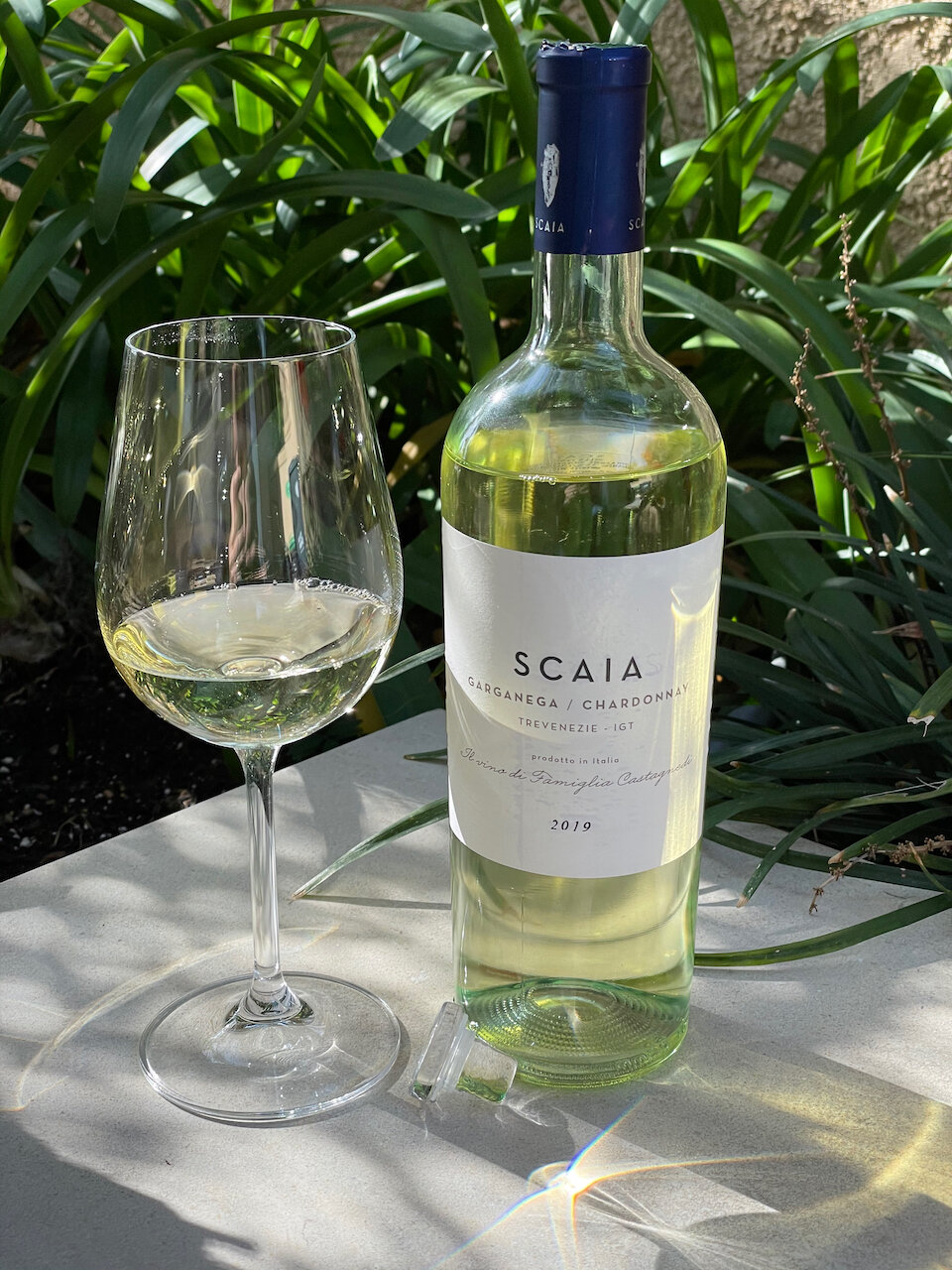2019 Scaia Garganega / Chardonnay ($14)
The Scaia project was launched by Tenauta Sant’Antonio in 2006 with the aim of creating wines with a modern style outside the restrictions by Italy’s denomination system. In Veneto dialect, the word “scaia” means a chip of stone, chalk, limestone. So, their name is a tribute to their soil, where a line of unique young wines is produced.
The vineyards for this wine are located in the eastern part of the Valpolicella region, near the Soave region - both of which are in the north-eastern part of Italy.
The wine is produced from 55% Garganega (gar-gah-neh-gah) and 45% Chardonnay. Garganega is best known as the white grape variety used to make Soave and Gambellara in Italy’s Veneto region.
Post-fermentation this wine received batonnage once a week under cold stabilization until it was bottled. It was aged in stainless-steel tanks to preserve it bright fruit flavors, did not undergo Malolactic conversion and spent three months in the bottle before going to market.
This Scaia Garganega/Chardonnay is pale gold in color and has aromas of bright, fresh fruits including yellow apple, tangerine and hints of green herbs. On the palate, the bright fruit flavors of the Garganega shine brightly yet are moderated by the Chardonnay. There are flavors of lemon zest, grapefruit, pineapple and good acidity on the finish with just a touch of saline.
This wine from Scaia is a great value for a tasty wine which is the perfect fit for a Behind the Cork™ wine of week. Chill this one to 50 degrees F and enjoy! Cheers!
Disclosure of Sample Submission: I received this sample at no cost for review. The opinions expressed are entirely my own.
Samples Provided by Katherine Jarvis, The Jarvis Communication Team




